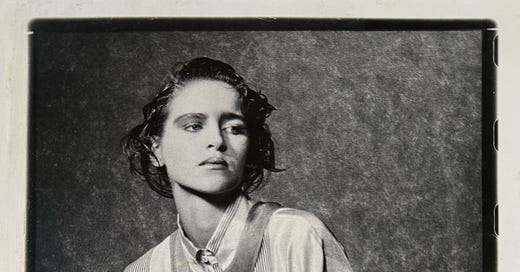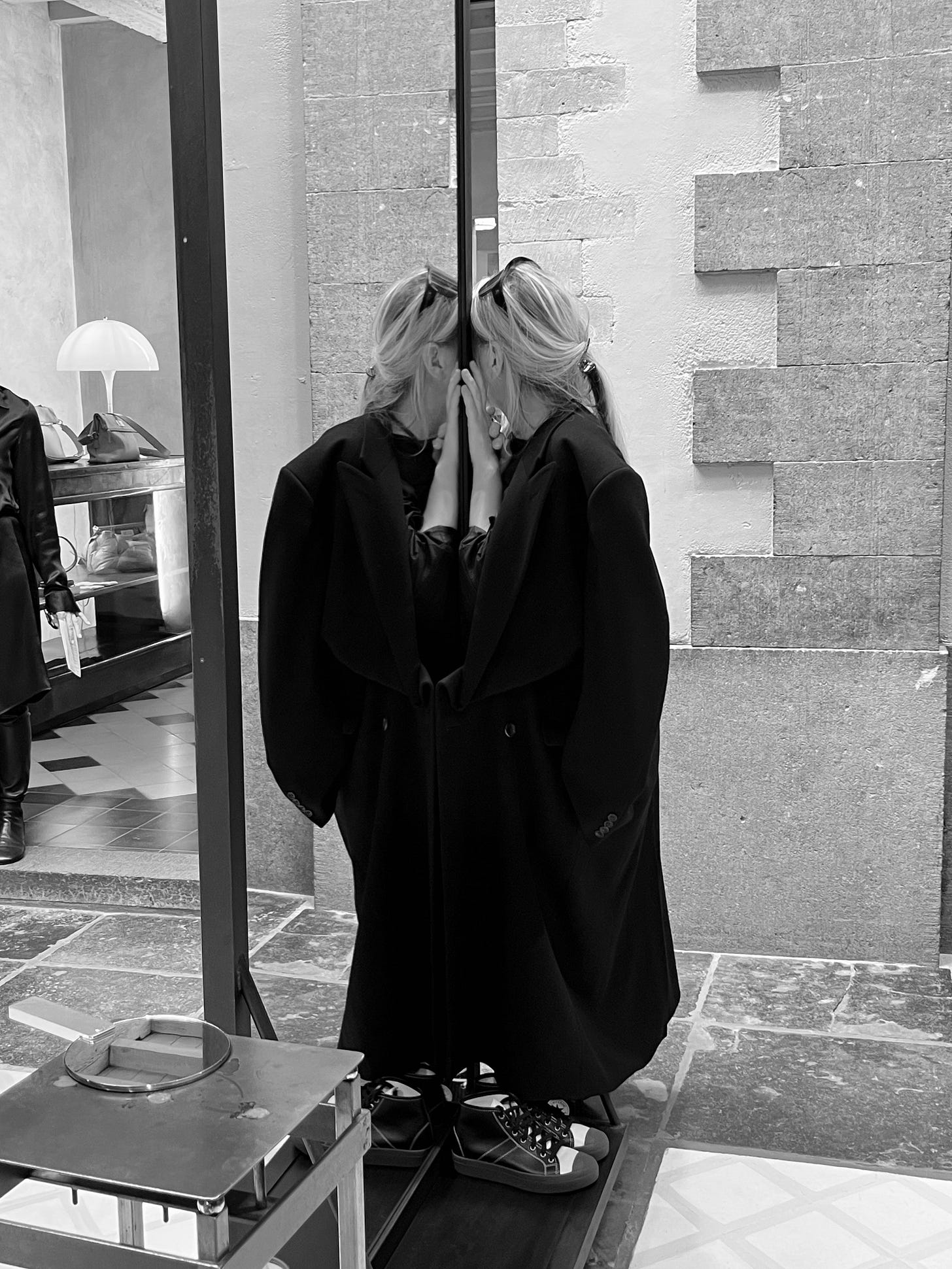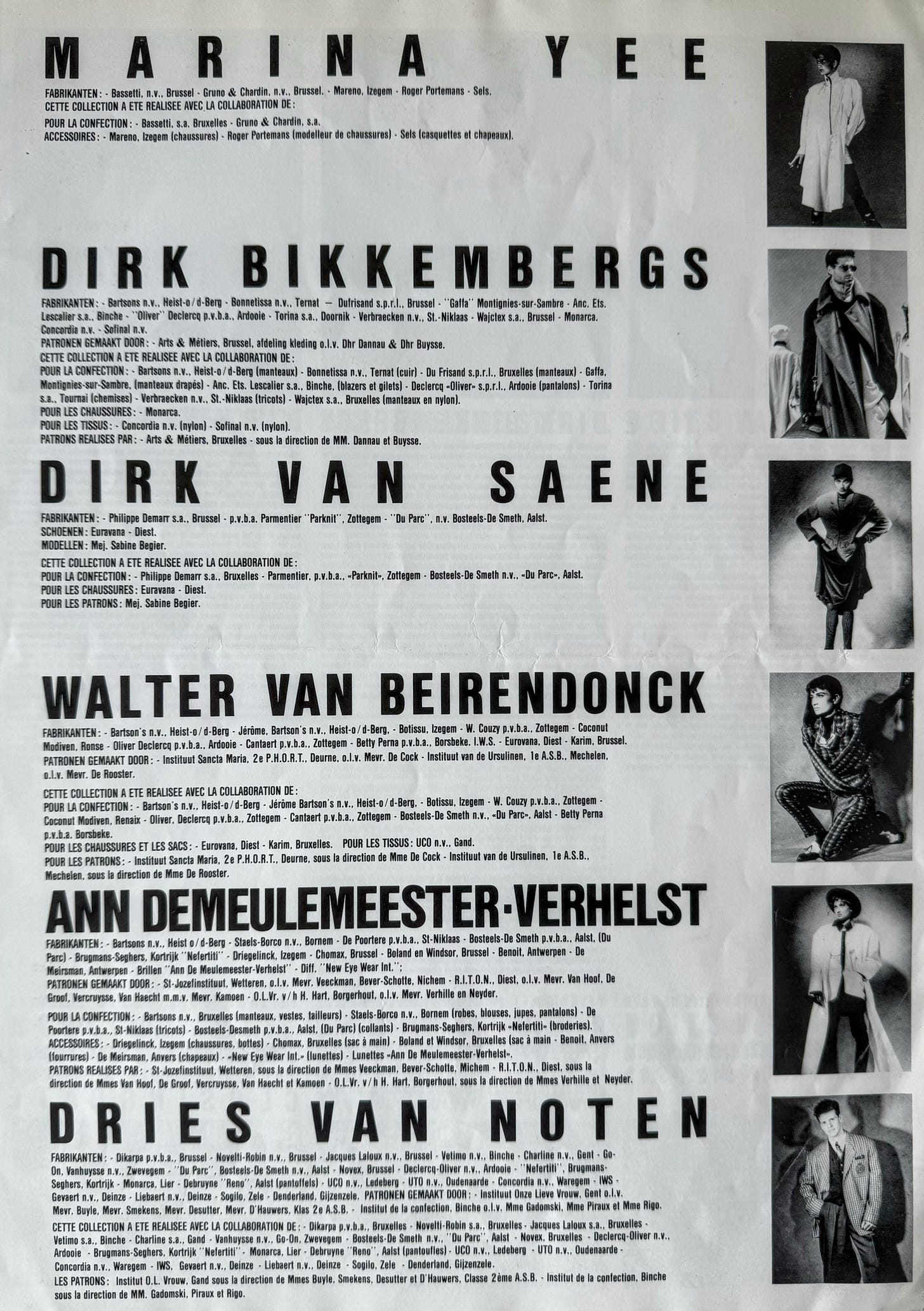An in-depth conversation with Marina Yee, the Antwerp Six enigma
Almost 40 years since the group officially became known by their group monicker, the designer reminisces about this vital era and her ensuing career.
By Wonne Scrayen
When a fashion, music, art or collective of any discipline rises to prominence, naturally, there will be members who thrive in the spotlight and others who shy away. Marina Yee, one of the ‘Antwerp Six’, is very much in the latter camp.
The notion of the 'Antwerp Six' – Dries Van Noten, Ann Demeulemeester, Dirk Van Saene, Walter Van Beirendonck, Dirk Bikkembergs, and Yee – first emerged in 1981, during the designers' time studying at the Royal Academy. However, it wasn't until 1986, when the graduates embarked on a group trip to London to show their respective collections at the British Designer Show – a trade show at the Olympia in Kensington that preceded London Fashion Week – that the collective moniker began to appear.
Yee counts her first proper discovery as a couple of years prior to this, in 1984, when Sonja Noël, founder of Brussels’ iconic multi-label designer store STIJL, noticed and stocked her work. Yee became one of the defining designers of the emerging Belgian fashion scene – her early visions of reconstructed garments and repurposed vintage pieces putting her at the forefront of a generation of designers characterised by their non-conformist attitude. To this day, each of her creations has something distinctive about it, be it unexpected fabric combinations or architecturally constructed ensembles.
Despite her reputation as the quiet one of the group, she does not shy away from speaking honestly about the fashion industry. With a retrospective exhibition at the Brussels Fashion & Lace Museum celebrating 40-plus years of STIJL, and a career that is off to a fresh – or, according to the designer herself, first proper – start since her namesake label’s relaunch in 2018, now felt like the perfect time to sit down and speak with Yee about her career.
You first entered the Golden Spindle Contest in 1982. However, it wasn’t until 1984, when Sonia discovered your work, that things began to pick up. What did those in-between years look like?
Those first few years are a blur to me. So much was happening simultaneously. 1981 or 1985, it’s all a bit the same to me, even though it wasn’t, of course. The six of us were a group driven by ambition, seizing all opportunities that came our way. It might sound strange, but it wasn’t the most interesting of times, in the sense that we were just experimenting, getting in on all these amazing opportunities. What eventually became the ‘Antwerp Six’ was greater than the sum of its parts. Nothing ever happens in a vacuum.
We were the showpieces of the ‘Belgian Textile Plan’ launched in 1981, a federal plan of measures to help build the industry. Part of it entailed a promotional campaign by the Institute for Textile and Confectionery Belgium. The two main pillars of the ITCB were the magazine Mode, dit is Belgisch and the Golden Spindle Contest. One thing led to another, and we got caught up in something bigger before we knew it. We were attracting more and more publicity.
To be so in the crosshairs, all our time was spent keeping this momentum going. But this head-down dedication also meant lots passed us by because of how busy we were all the time. So, often I get things muddled up when those early years are concerned.
What was the impact of your encounter with Sonja, the founder of STIJL, at that momentous Golden Spindle Contest in 1984?
I was taken aback. After the show, she literally tapped me on the shoulder and, decisive as she is, insisted she wanted to sell the prototypes in her shop. It wasn’t even a question; she simply informed me. It immediately became clear she wouldn’t take no for an answer. I was overwhelmed by it all, not fully knowing what she meant. Of course, I knew of her. STIJL stood out as a store. But it wasn’t until that moment in 1984 that we got acquainted. I’ll never forget it; it was such a quaint experience but also very telling of our connection. Even though we are completely different, somehow, she got me right away.
Another two years later, you were one of six Belgians to go to London and be part of what would be a momentous moment in fashion history. Next year marks 40 years of the renowned ‘Antwerp Six’. Looking back, how does it feel to know you were a part of such a big part of fashion history?
I’m still stunned, to be honest. But at the same time, I’m also not. We were a unique force, a real movement, so immersed in the moment that it flew by. Only in hindsight could we pause and reflect.
There have been other groups of young, emerging designers. But what set us apart was our unparalleled sense of symbiosis. One by one, talented designers, who then decided to join forces. All of us were focused on our individual practices, still second-guessing ourselves as up-and-coming designers. At the same time, we also pushed each other to go the extra mile. Our aesthetics might differ considerably, but we stimulated one another by wanting to measure up without any envy or tension.
We were tremendously strong compared to other (later) groups, forces to be reckoned with back then and still to this day. Respectable names, never mayflies. I do believe we’ve written history. We forever changed the outlook of Belgian fashion, a benchmark for what was to come, whether with or without our further involvement.
Are you still in contact with many of your fellow students?
I’m not one to keep in touch; I’m more of an Einzelgänger, more reserved, you could say. It’s always very cordial whenever we see each other, but we’re not close friends. Others, like Dries and Ann, are much closer. I’m quite the exception. Then again, I disappeared from the scene and the group for a prolonged period. And there was my move to Brussels at a certain point. These are all factors that play into it. But in the end, my personality is just different.





